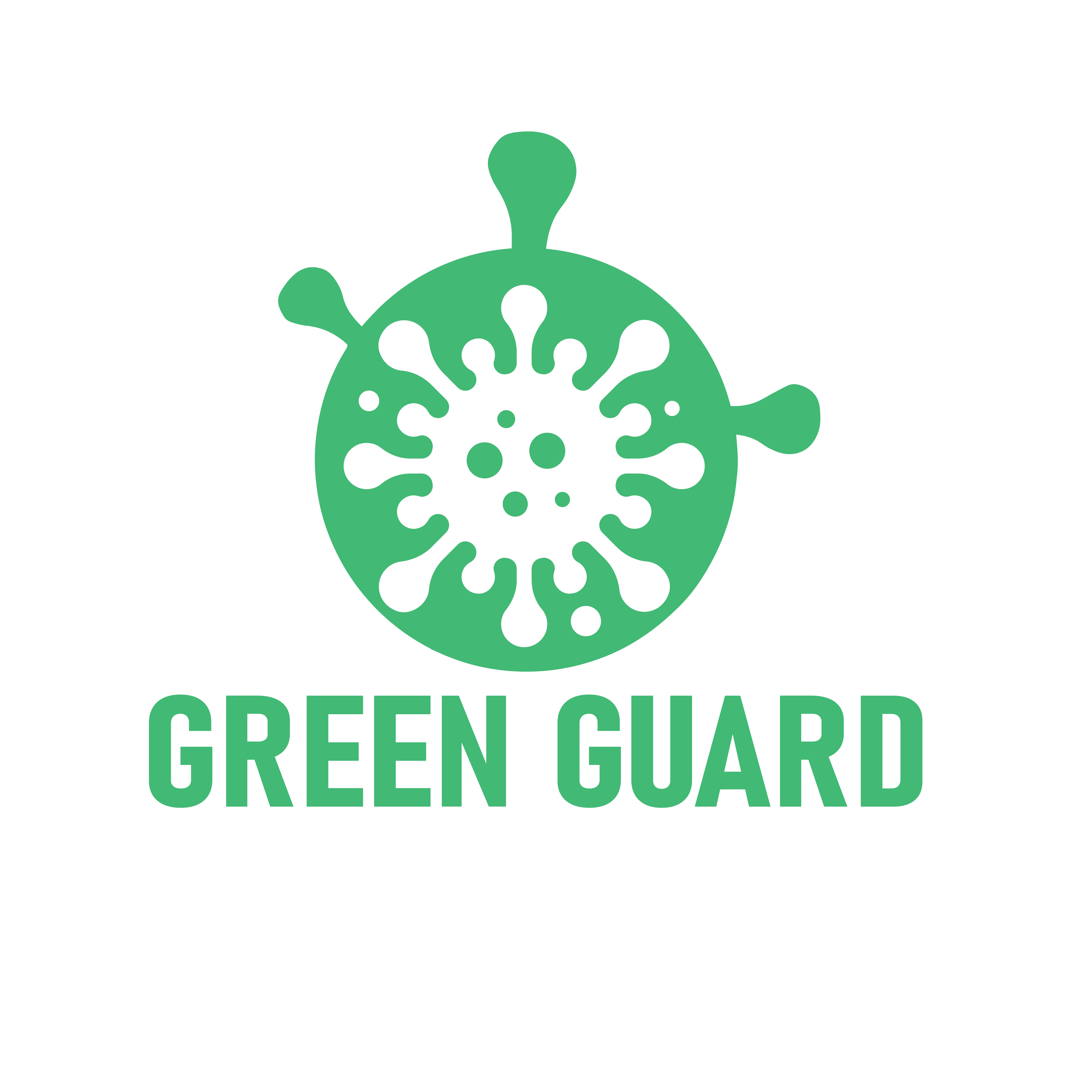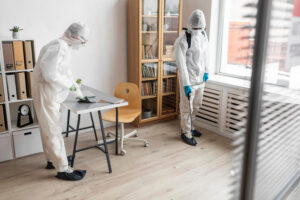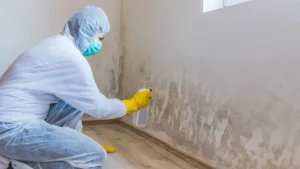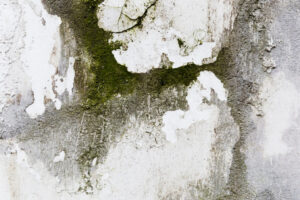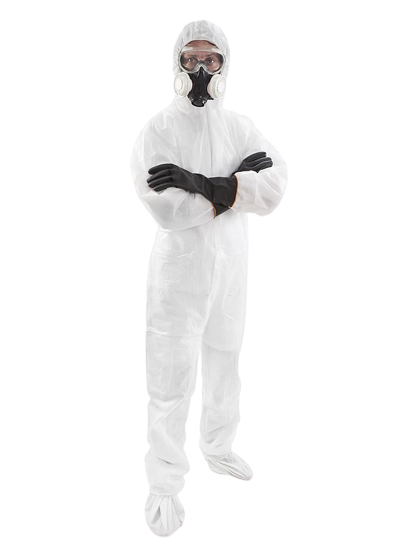Mold is a type of fungus that thrives in damp and humid environments. It reproduces by producing spores that can easily spread through the air. While some types of mold are harmless, others can pose serious health risks, especially for individuals with allergies, respiratory conditions, or weakened immune systems. Prolonged exposure to mold can lead to symptoms such as coughing, sneezing, skin irritation, and even more severe reactions in some cases. In addition to health concerns, mold growth can also cause damage to your property’s structure, leading to costly repairs if left unchecked.
It’s essential to be aware of the potential dangers associated with mold growth and to take proactive measures to prevent its proliferation. By understanding the risks involved and learning how to detect mold early on, you can protect both your health and your property from the harmful effects of mold infestation.
Signs of Mold Growth in Your Property
Detecting mold in your property can sometimes be challenging, as it tends to thrive in hidden or less visible areas. However, there are several common signs that can indicate the presence of mold. These include musty odors, visible mold growth on surfaces, water stains or discoloration, peeling or bubbling paint, and an increase in allergy symptoms among occupants. If you notice any of these signs, it’s crucial to investigate further to determine the extent of the mold infestation and take appropriate actions to address the issue.
In some cases, mold may be present but not easily visible. This is why conducting regular inspections, especially in areas prone to moisture accumulation, is essential for early detection. By being alert to the signs of mold growth and acting promptly upon discovery, you can prevent the spread of mold and the potential harm it can cause to both your property and the health of those residing or working in it.
Preparing for a Mold Inspection
Before embarking on a visual mold inspection, it’s important to make necessary preparations to ensure a thorough assessment of your property. Start by gathering the tools and equipment you’ll need for the inspection, such as a flashlight, moisture meter, protective gear (e.g., gloves, mask), and cleaning supplies. Ensure that you have access to all areas of the property that require inspection, including attics, crawl spaces, basements, and any other spaces susceptible to mold growth.
Next, familiarize yourself with the common areas where mold is likely to develop, such as bathrooms, kitchens, basements, and areas with plumbing or roof leaks. Take note of any past water damage incidents or areas with poor ventilation, as these can contribute to mold growth. By preparing adequately for the mold inspection, you’ll be able to conduct a more comprehensive assessment and identify any potential mold issues with greater accuracy.
Conducting a Visual Mold Inspection
The visual mold inspection is a crucial step in identifying the presence of mold in your property. Start by systematically examining each room, focusing on areas where moisture or water damage is prevalent. Look for visible signs of mold, such as black, green, or white patches on walls, ceilings, floors, or other surfaces. Use your flashlight to illuminate dark corners or hidden spaces where mold may be growing out of sight.
Pay attention to any musty odors or dampness in the air, as these can also indicate the presence of mold. Inspect areas with plumbing fixtures, windows, doors, and vents for any signs of water leaks or condensation. Check for any cracks or gaps in the walls, ceiling, or flooring where mold spores could potentially accumulate and thrive. Document any findings during the inspection to keep track of areas that may require further investigation or remediation.
Tools and Equipment Needed for Mold Inspection
To conduct a thorough mold inspection, you’ll need a few essential tools and equipment to aid in the process. These include a flashlight for illuminating dark areas, a moisture meter to detect elevated moisture levels in building materials, protective gear such as gloves and masks to prevent exposure to mold spores, cleaning supplies for immediate remediation, and a notepad or mobile device for documenting your findings.
Additionally, consider using a borescope or thermal imaging camera for inspecting hard-to-reach or hidden spaces where mold may be present. These tools can help you identify moisture intrusion points or concealed mold growth behind walls or ceilings. By equipping yourself with the necessary tools and equipment, you’ll be better prepared to conduct a comprehensive mold inspection and address any issues effectively.
Identifying Common Areas for Mold Growth
Mold thrives in moist environments with organic materials to feed on, making certain areas of your property more susceptible to mold growth than others. Common areas where mold is likely to develop include bathrooms, kitchens, basements, attics, crawl spaces, and areas with poor ventilation. Pay close attention to spaces with plumbing fixtures, such as sinks, showers, and toilets, as well as areas with roof leaks or inadequate drainage.
Inspect walls, ceilings, and floors for signs of water damage, discoloration, or peeling paint, as these can indicate underlying mold growth. Check for condensation on windows, pipes, or walls, as excess moisture can create ideal conditions for mold to thrive. Keep an eye out for any areas with high humidity levels or poor airflow, as stagnant air promotes mold growth. By identifying and addressing these common areas for mold growth, you can prevent infestations and maintain a healthy indoor environment.
Preventing Mold Growth in Your Property
Prevention is key when it comes to mold growth in your property. By implementing proactive measures to control moisture levels and eliminate mold-friendly conditions, you can significantly reduce the risk of mold infestations. Start by fixing any water leaks or plumbing issues promptly to prevent moisture buildup. Ensure proper ventilation in bathrooms, kitchens, and other high-humidity areas to reduce condensation and dampness.
Regularly inspect and maintain your property’s roof, gutters, and drainage systems to prevent water infiltration and mold damage. Use dehumidifiers in damp spaces to keep humidity levels below 60%, inhibiting mold growth. Clean and dry water-damaged materials within 48 hours to prevent mold colonization. Consider using mold-resistant paints or materials in moisture-prone areas to deter mold growth. By taking proactive steps to prevent mold, you can safeguard your property and the well-being of its occupants.
Hiring a Professional Mold Inspector
While DIY mold inspections can be informative, there are instances where hiring a professional mold inspector is recommended. A certified mold inspector has the expertise and tools to conduct a thorough assessment of your property, identify hidden mold growth, and provide detailed recommendations for remediation. If you suspect extensive mold infestation, have a history of water damage, or are dealing with health issues related to mold exposure, seeking professional help is advisable.
A professional mold inspector can perform air quality testing, surface sampling, moisture readings, and visual inspections to assess the extent of mold contamination. They can also create a customized remediation plan tailored to your property’s specific needs. By entrusting the inspection to a qualified professional, you can gain peace of mind knowing that any mold issues will be addressed effectively and that your property will be restored to a safe and healthy condition.
Conclusion
In conclusion, conducting a visual mold inspection is a proactive measure that can help you detect and prevent mold growth in your property. By understanding the dangers of mold, recognizing the signs of mold infestation, and preparing for a thorough inspection, you can safeguard your property and the health of its occupants. Remember to equip yourself with the necessary tools, identify common areas for mold growth, and take preventive actions to create a mold-free environment.
Whether you choose to perform a DIY mold inspection or hire a professional mold inspector, the key is to stay vigilant and address any mold issues promptly. By following the steps outlined in this guide and implementing preventive measures, you can protect your property from the harmful effects of mold and ensure a safe and healthy living or working environment for all. Don’t wait until mold becomes a problem – take action now to keep your property mold-free and your loved ones safe.
